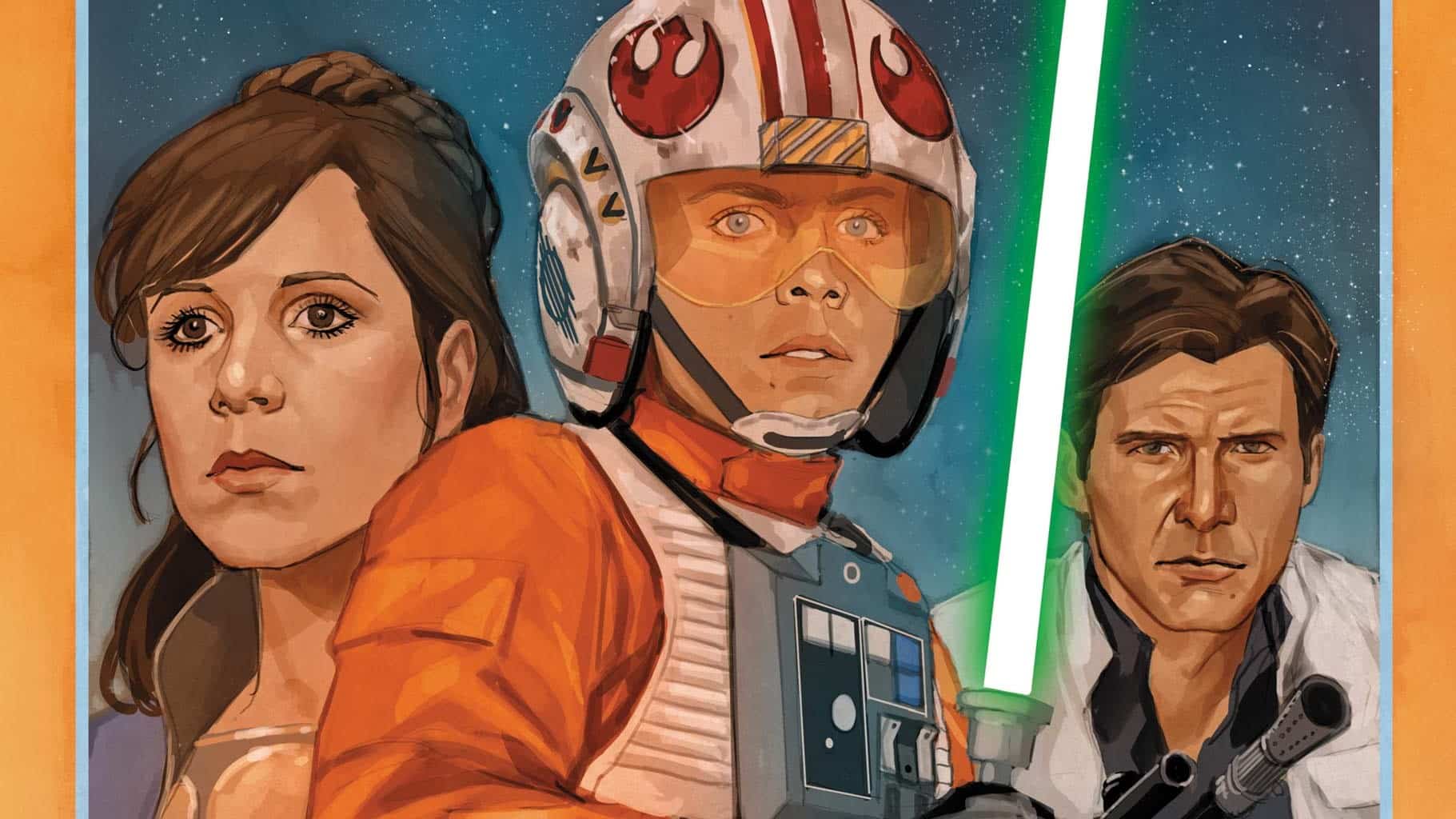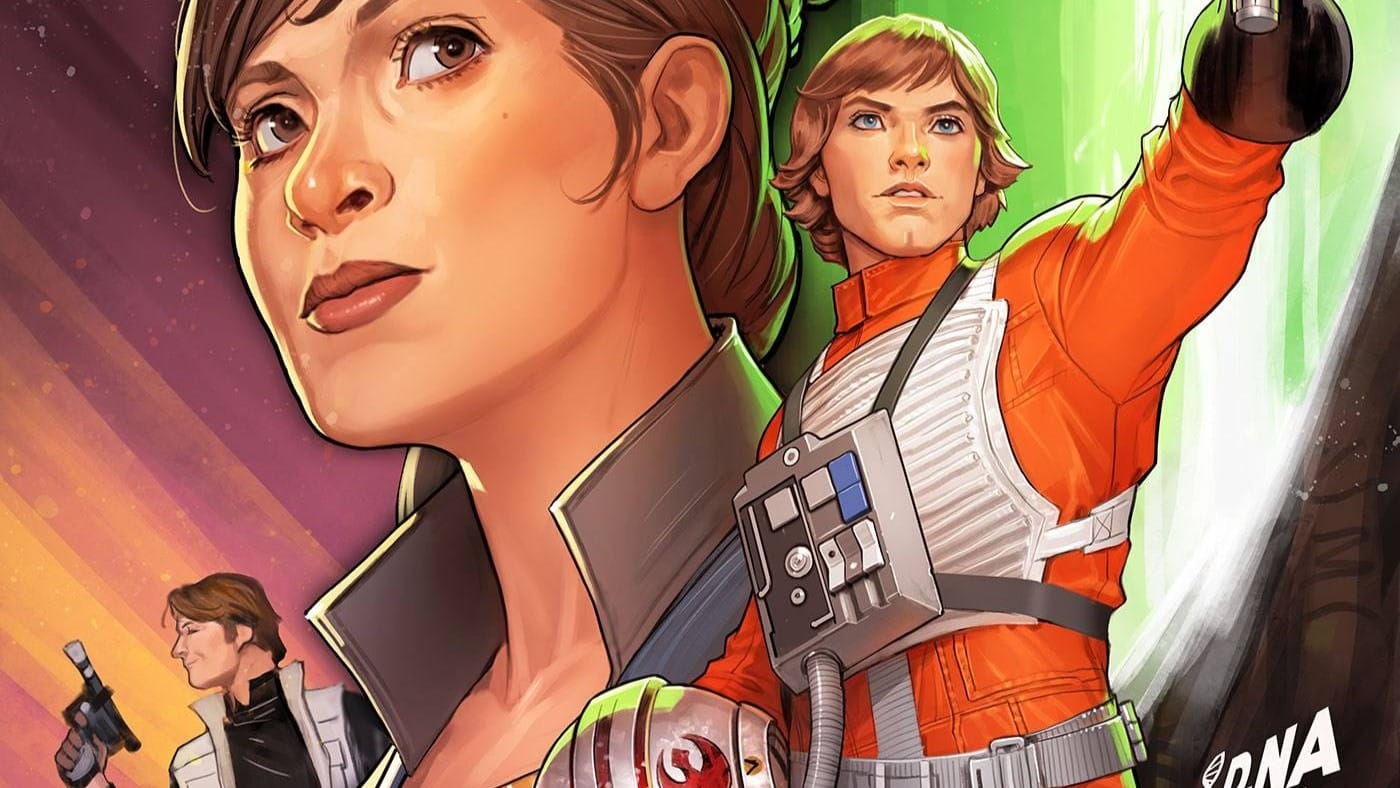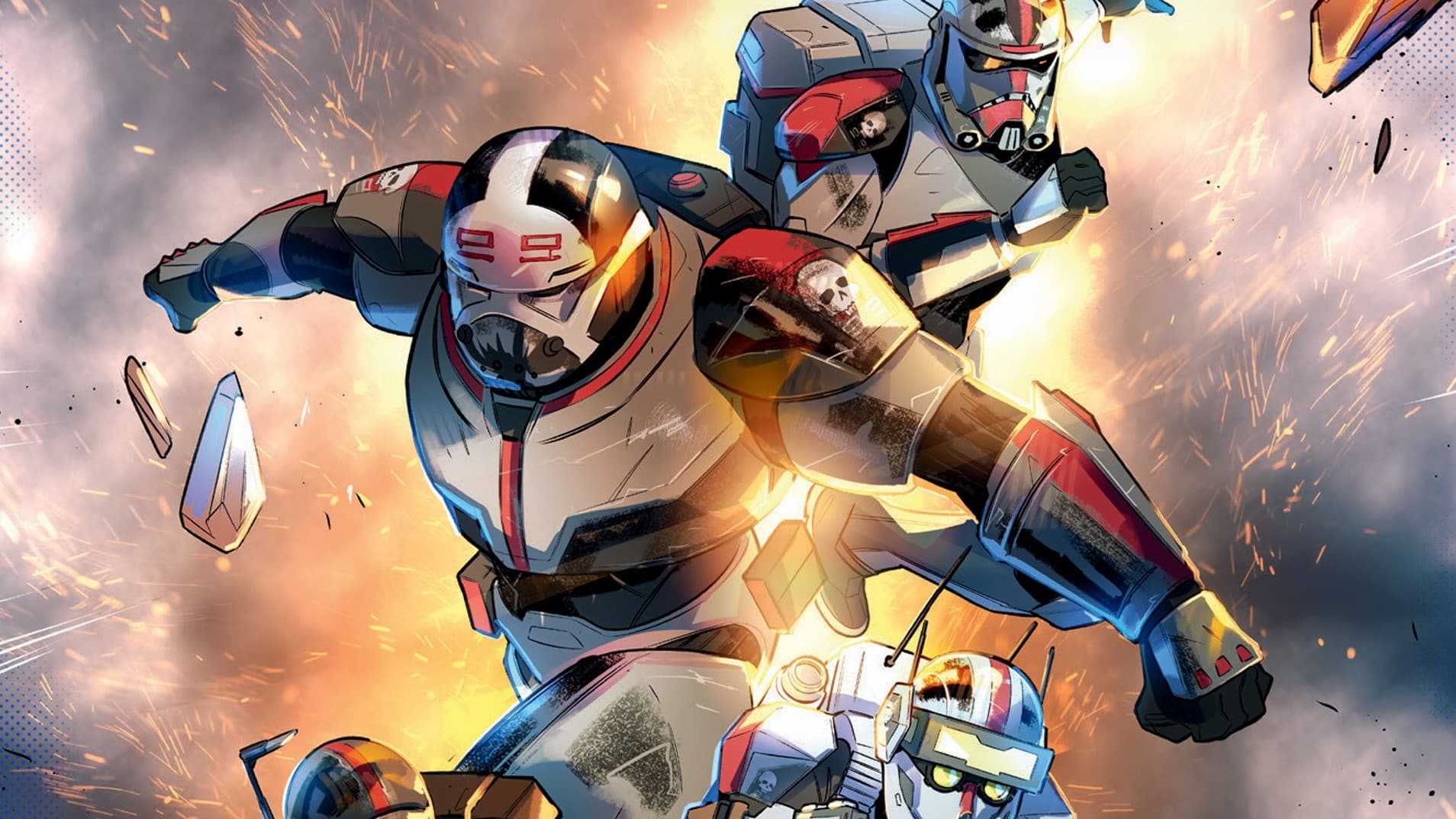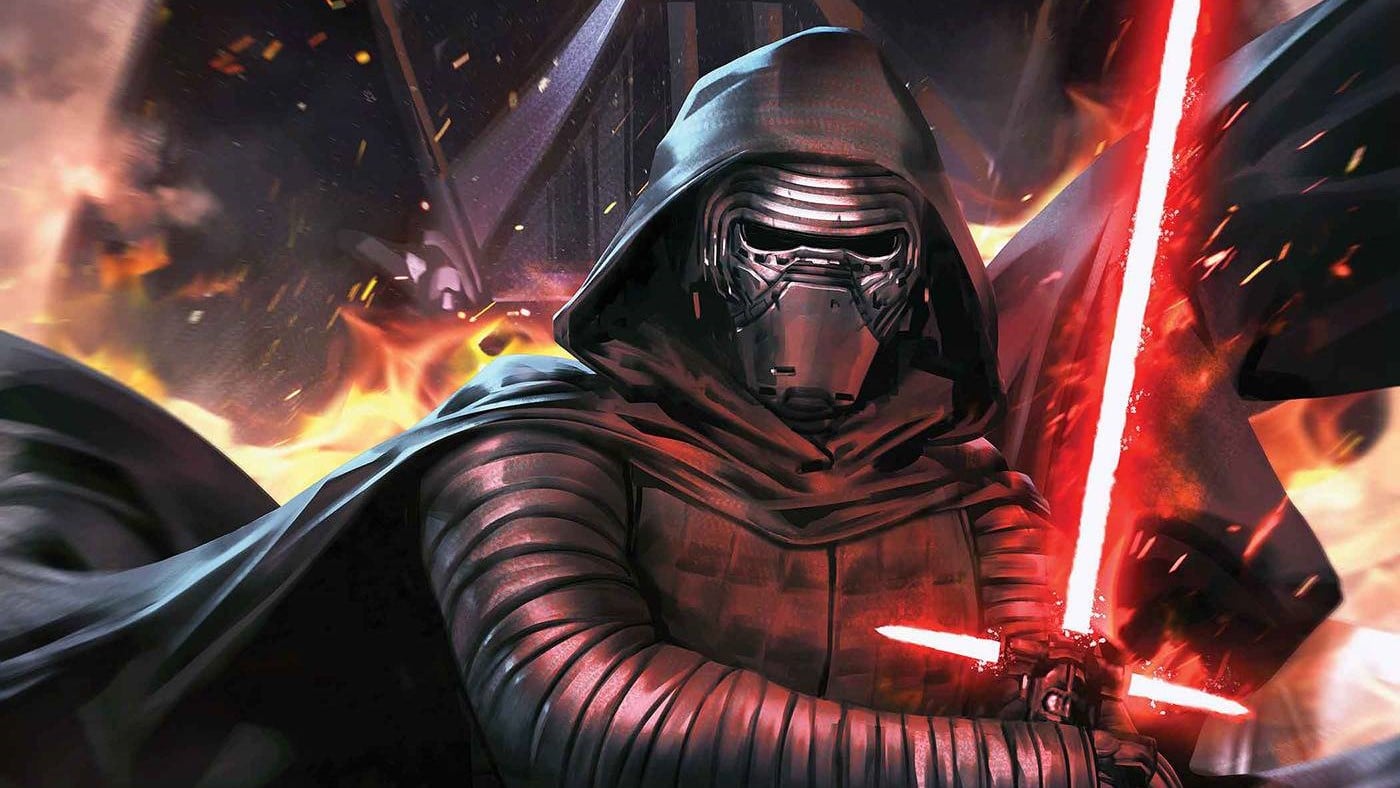The really bad news first: it has somehow, implausibly, gruesomely, been 10 years since 2015. I know. This means it has been just shy of 10 years since The Force Awakens inaugurated a whole new era of things for Star Wars fans to be apoplectically upset about, and 10 years since Marvel began publishing Star Wars comics again for the first time since 1987.
In a decade of Marvel comics often defined by promising runs cut frustratingly short, mercurial swings in editorial direction and a frequent sense of little creative cohesion, the Star Wars line was a minor miracle of thoughtful, tightly managed curation — a worthy parallel and rival to the Krakoan era of X-Men comics between 2019 and 2024. It provided a showcase for ambitious runs by career heavies like Kieron Gillen and Greg Pak, while also giving emerging writers like Alyssa Wong and Ethan Sacks that rarest of gifts in contemporary direct market comics — an opportunity to write stories that weren’t canceled, renumbered or retooled in less than half a year. Consider that Dr. Chelli Lona Aphra — a queer woman of color and a deliciously, unrepentantly scummy antihero who had nary a cameo in any movie, TV show or West End Game RPG sourcebook prior to her first appearance in 2015 — got not one but two 40-issue solo runs, both of them consistently entertaining, in an industry that vacillates between struggling to market excellent woman-led books like Rainbow Rowell’s She-Hulk and letting Jean Grey loose to meander about in space just to say they did.
This is to say that the notion of celebrating this anniversary isn’t arbitrary. It’s a well-earned victory lap, and a well-timed one, too. Not only does last week’s valedictory one-shot, Star Wars: A New Legacy, celebrate that 10-year milestone, it also marks a significant turning point in the comics. When the 2020 soft reboot’s core titles — Charles Soule’s Star Wars, Pak’s Darth Vader, Wong’s Doctor Aphra and Sacks’ Bounty Hunters — wrapped in 2024, they were succeeded by Alex Segura’s Battle of Jakku saga, which played out over a trilogy of more or less weekly miniseries and finally got the line past Return of the Jedi and into the relatively uncharted territory between the original movies and the sequel trilogy (this being Star Wars, “relatively uncharted” does entail at least three TV series and a slew of novels). The upcoming wave of new titles — spearheaded by Segura, Soule and Marc Guggenheim — similarly leave the well-tread ground of the classic trilogy behind, diverging from the tighter inter-title continuity of the 2020 books for a more siloed approach, with books set decades apart.
Star Wars: A New Legacy is, like most anniversary presents, a strange thing — a bundle of in-jokes, shibboleths and affectionate gestures backward that is presumably endearing or annoying in direct proportion to how much existing affection the reader has for its particular flavor of space business.
This is not a comic for curious readers interested in getting a taste of the upcoming relaunches. It’s dubiously suitable for casual fans of the movies looking to hop in and read about their favorite characters — aside from brief but significant cameos from Grand Moff Tarkin and Darth Vader, and a meatier role for Book of Boba Fett utility player Black Krrsantan, no major characters from the movies or TV shows pop up at all. It is deep insider baseball, a showcase for obscure cameos and last lingering looks at cult favorites. For a one-shot with New front and center in the title, it is remarkably locked into the retrospective gaze, for both good and ill.
The writers given space to pay their respects here are Soule, Jason Aaron and Gillen — three of the four writers with substantial runs on the flagship Star Wars title since 2015. I found myself a little puzzled and disappointed by the absence of Pak, whose tenure on the book was brief but memorable. The structure is a little curious. While Gillen and Aaron go the route of offering a last word on some of their signature characters, taking a last tour of their old stomping grounds, Soule, who gets by far the most page space, splits his time between two of his most interesting villains (the cursed Sith ghost Lord Momin and the ambitious, vindictive imperial Ellian Zahra) and perhaps the two most prominent comics-centric characters he hasn’t written much of, the aforementioned Aphra and the cyborg bounty hunter Beilert Valance. It’s odd — while Aaron and Gillen’s stories both read as a farewell to their time on the franchise, Soule (who is launching a Kylo Ren book in the near future) is a little more buoyant, a little more cheeky, sampling the dishes he hadn’t gotten to taste yet before moving onto the next course. It’s more openly transitional — less his final word on the setting and more a playful interlude with some pieces unlikely to follow him into his next Star Wars projects.
Before taking a look at each of these three stories individually, I want to touch on another point of sometimes satisfying, sometimes frustrating consistency with the 2015-25 line: art direction. The Marvel books, in contrast to the somewhat more loosely curated IDW and Dark Horse books running concurrently, tend in general toward a restrained, grounded aesthetic in keeping with the Star Wars movies’ nuts and bolts, scuffed and duct-taped sensibility. This often works magnificently — John Cassaday’s tenure on Star Wars had a gorgeous sense of scale, with taut, precise action choreography, and Kev Walker’s Aphra run rendered every grimy crevice and crack of his outlaw landscapes in picaresque detail. At other times, without naming names, this approach led to lifeless, doll-like figures, or a somewhat tepid and conservative look — competent storytelling without much in the way of personality.
To be clear, it’s a good-looking line of comics, for the most part, the misses less frequent than the hits, and far more instances of forgettable art than actively inept art. Still, when I think about the long history of Star Wars comics, the ones that linger the most vividly are those with a visual character that challenges or complicates the signature look of the films. Cam Kennedy’s psychedelic pastels in 1991’s Dark Empire, Al Williamson’s gorgeous Alex Raymond homages in the Star Wars newspaper strip in the early ’80s, or Harvey Tolibao’s gnarly, earthy approach in The High Republic Adventures. Even at Marvel, Giuseppi Camuncoli gave Soule’s 2017 Darth Vader a jagged, highly kinetic energy that reimagined Vader as a sort of twisted shounen nightmare — an often stunning interpretation that gave the book a singular, unforgettable aesthetic. As I read A New Legacy, which is certainly not an ugly comic, I was struck by the extent to which the art felt subordinated to the scripts. This was in stark contrast to Dark Horse’s three Star Wars offerings last week, but especially the gorgeous linework and colors of Vincenzo Riccardi in The High Republic Adventures: Dispatches From the Occlusion Zone #4:
Again, none of the three stories in A New Legacy has bad art. Leonard Kirk in particular turns in moody, expressive pencils with bleached, sun-baked colors from Jay David Ramos that complement Aaron’s script immaculately. But I do wish that what was intended as a milestone celebration had a somewhat more daring, ambitious look.
The centerpiece of the collection is Soule’s “The Grand Imperial Jubilee,” a light-on-its-feet caper/heist story with art by Ramon Rosanas and Neeraj Menon. This is the most “well, duh” story here — it’s about a party, albeit an evil party, and its infiltration by a motley suite of thieves, mercenaries and angry ghosts, and it feels like a party. It’s an effervescent, clever, eminently fun toast to the comics it draws from, like a flashback version of the famous Ewok bonfire party but with more theft and property destruction.
The plot is simple — more a pretext for character beats and novel interactions than anything. The Empire is throwing a lavish gala to celebrate the 30th anniversary of Palpatine’s election as chancellor; Aphra and her on-again-off-again lover Sana Starros are there to rob a valuable sculpture (and whatever else is lying around); Beilert and minor cameo king Rik Duel are there to claim a price on Aphra’s head; and Momin, the ancient and undead Sith artist of Soule’s Vader, pops up halfway through to overturn tables and shoot lightning in the name of reclaiming his long-lost reputation.
That’s essentially it — Aphra doesn’t get her score, Beilert doesn’t get his bounty, Momin doesn’t get to keep his host, but the tone remains buoyant and light. Soule, in taking us back before A New Hope, before the 2015 comics even begin, gives us a glimpse of these characters before their troubles start in earnest — perhaps not young and naive as such, but at a much earlier stage in their lives. It’s a way of marking the impact that the titular star wars had on them, by stripping away the substantial character development Aphra, Sana and Beilert had each received and letting them run around as completely amoral, profit-motivated scoundrels. It’s fun! And it’s pretty — Rosanas’ characters are expressive, his pages have a lovely sense of flow and he doesn’t miss an opportunity to cram the backgrounds of the party scenes with cheeky cameos. It’s a bonbon or after-dinner cocktail that presumes the reader is coming off the fuller meal of the stories that came before.
Aaron takes a much different tack in “For the Love of the Empire,” which features his team of elite stormtroopers, S.C.A.R. Squadron. S.C.A.R. Squadron has always been one of those ideas that sounds dumb in theory, and was, to be fair, often dumb fun in practice. Each one has a little gimmick (jet pack guy, big strong guy, etc.)! Their leader is a bad-ass with a lightsaber! At their best though, when Aaron toggled from his splashy action romp mode to his more introspective and shrewd mode, they were an interesting counterpart to the core trio of Luke, Han and Leia — just as tenacious, but with a callous disregard for collateral damage. Ideologically locked-in in a way our heroes, in the Aaron run’s pre-Empire moment, were still meandering toward. Faceless, where our heroes squabbled and clashed over their respective idiosyncrasies. They were the perfect foils for characters just stumbling out from the haze of A New Hope — young, unsure and a little punch-drunk off their first big win.
“For the Love of the Empire” gives us a story that places S.C.A.R. Squadron front and center, at a point a bit past their last appearance, just prior to The Empire Strikes Back. It’s a somber, downbeat story about guys resolutely on the wrong side of history beginning to face evidence that that might be the case.
In it, we follow the members of S.C.A.R. on a montage of missions — suppressing local rebellions, hunting down rebel cells, trudging through acid rain, snow and swamps, while the narrator, squad leader Kreel, reflects on the devalued social currency of being a Stormtrooper in a post-Death Star galaxy.
Where the squadron was once cheered as heroes wherever they went, they now find themselves regarded with fear, or anger, or resentment, or outright resistance. As communities realize the empire isn’t untouchable — that it can be subverted, refused and fought — they begin to treat its agents with a corresponding lack of deference.
In another story, this might be a wake-up call. Kreel and his teammates might recognize the harm they’re causing, or that what they took as adulation and love (“There was a time these hicks would pack the streets, cheering and waving as we left,” he reflects, “after we brought order to whatever backwoods pile of nothing they called home. Like on Horford. We were treated like moffs on Horford”) was really fear and appeasement. But here, it makes them bitter. The fake adulation they grew accustomed to came to feel like something owed, something theirs by right of force. To lose that veneer of respect isn’t taken as a sign to reassess, but to double down, to punish the galaxy for doubting, for losing faith.
It’s timely, in the same way that Star Wars is often timely — that is, in as blunt a fashion as possible, with nuance and equivocation brushed aside in big, lurid bursts of laser-fire and pageantry. At the end of the story, the exhausted, frustrated and beleaguered squad returns to Horford, where they were once received so lavishly. But things have changed — the spirit of rebellion has taken hold, and the people of Horford are if not emboldened, then at least no longer cowed into obeisance.
This is a story that builds shrewdly on Aaron’s 37-issue Star Wars run, which trades on the sense of accumulated history that S.C.A.R. Squadron accrued, their brutality, their cruelty, their mounting loathing for the rebellion. It capitalizes on the presumption that the reader sees beneath the bravado and self-mythologizing of Kreel’s narration to the brittle insecurity beneath it, to the seething urge to hurt and punish the world for not loving him and his violence. So as we see them wandering Horford, there’s an effective sense of creeping dread that bubbles over as they stumble upon a group of children dressed as Luke, Leia, Han and company.
It’s a cute splash page in and of itself, giving the excellent Kirk an opportunity for a touch of levity in an otherwise unrelentingly grim story as he illustrates Star Wars cosplay cobbled together from trash and broken things — “Chewbacca” is a burly kid with a shaggy sweater and a messy mane of hair, “Luke”’s lightsaber is a length of metal crudely splashed with blue paint, the ersatz droids are clad in bits of scrap metal…
S.C.A.R.’s response is chilling and predictable — or, rather, inevitable. Kirk again rises to the task, pivoting from the tense charm of the costumed kids to depicting civilians torched and cut down with a level, almost deadpan control. In his monologue, Kreel remains the aggrieved hero, betrayed and misunderstood by cowardly, ignorant civilians. The story knows better, though, and Kirk’s pencils, augmented by Ramos’ sickly, unearthly colors, reinforces it — Kreel’s sense of self is built in blood, and blood sustains it. His facile heroism is a mask over a deeper horror, just as his true face, the eyes of a man killing children and broken, impoverished people is concealed behind the blank white surface of his helmet, the pale green of his lightsaber reflected against it.
It’s a brilliant story, the highlight of the collection and a haunting epilogue to the Aaron run proper. It’s also the most deliberate about what marking time means — the story’s crux is Kreel’s awareness of attitudes shifting, history’s verdict turning, slowly, against the vision of empire within which he’d subsumed himself. Not all anniversaries are good ones, and not all returns are happy. The carnage at the end of this story, in which Kreel “let[s] the squad run wild” is a jubilee of sorts too — a too-familiar one.
Finally, Gillen and Salva Espin offer “Rogue’s Gambit,” which slips neatly in the middle of the 2015-16 crossover “Vader Down.” Gillen was one of the first architects of this line, writing Darth Vader in tandem with Aaron’s Star Wars before shifting into a Doctor Aphra solo spin-off and finally, in late 2017, taking over Star Wars proper. He’s played as much a part as anyone in establishing the tone and scope of the revamped canon, and the setting is littered with creations he had a hand in introducing, from Aphra to the Wookiee mercenary Black Krrsantan, who made the rare leap from comics to TV in The Book of Boba Fett. So it was a little surprising that this story — which comes in at a concise five pages — is so … unambitious? Perhaps that’s unfair. Cozy might hit a more accurate note. It feels less like a story and more like what it functionally is: a bonus scene from a longer, more weighty narrative.
The concept is simple. While en route to the planet Vrogas Vas, Aphra and her provisional crew — Krrsantan and the evil droids 0-0-0 and BT-1 — kill time. Remember that scene in A New Hope where Chewbacca and R2-D2 play weird claymation monster chess (dejarik to the real heads)? It’s just that, with the cheeky twists that accompany the group’s gleeful amorality. The joke is on the nose, and was played nicely for both laughs and drama in “Vader Down” itself — Vader’s cobbled together team here is a sort of glippothic of the core original trilogy cast. The powerful Skywalker Jedi, the fussy protocol droid and his feisty astromech partner … the big, furry brawler … the rogue … the uh, girl. Gillen has some fun returning to this premise, letting the classic punchline of the movie’s brief dejarik scene (“I suggest a new strategy, Artoo. Let the Wookiee win.”) flip itself around as 0-0-0 clinically lays out how much of a monster his little beep-booping pal is.
This is cute enough, but it never rises above cute. The parallels to the scene in A New Hope are studious and neat, and when Vader enters the scene to witness the surprisingly toothless-feeling slapstick fight the rest of the crew has descended into he comes off as more of a ticked-off sitcom dad than a simmering force of self-loathing and destruction.
This isn’t helped by the art, which is pleasant enough to look at — the colors are bright and crisp, the pencils are clear with a soft, cheerful, cartoonish roundness to the figures — but a not entirely effective complement to the story’s insistence that these are dangerous, unstable people wedged into a humorously low-stakes situation. The joke works insofar as the tacit menace of 0-0-0, BT and Krrsantan is leveraged as an acute contrast to the much softer echoes of C-3P0, R2 and Chewbacca, but Espin gives each character such a chubby-cheeked cuteness that the danger feels blunted.
I feel somewhat ill-equipped to confidently state whether A New Legacy is a good comic — that is, one you should read. I certainly, for the most part, enjoyed it, but I’m a pervert — I’ve gotten into heated arguments about Vergere the gay evil bird that has not been canon in a decade, I get googly heart eyes watching my wife meticulously detail a scale model of an AT-ST at the living room table. I should be locked away in a dungeon, in one of those Magneto-proof bubbles from the movies, except with special walls that prevent opinions about Zuckuss from getting through. I liked seeing a dizzying array of rare freaks last seen in Jo Duffy’s early ’80s comics breeze by in passing. I liked getting a final, damning verdict on the boys of S.C.A.R. Squadron. Honestly, part of me even got a thrill out of seeing 0-0-0 bring his chipper nihilism to bear on the sweet science of holographic monster chess. But this comic is an odd beast — a farewell that doesn’t feel like a farewell, a transition point to the next era that doesn’t offer much in terms of what that new era will actually be like.
Ultimately, it has pleasures to offer existing fans of the comics, and each author brings something to the table that speaks to their specific contributions to the franchise. Again, like all anniversaries, it’s an act of commiseration as much as one of celebration. Look at where we’ve come from, where we’ve been. I finished this book with a slight sense of antsiness, an impatience to get to the next phase, but I also didn’t regret the time I spent with it. There’s always a little melancholy at the end of a birthday party or an anniversary dinner, when you’re cleaning up the paper hats and Champagne glasses, but still, aren’t you usually glad you came?

Holly Raymond
Holly Raymond is a writer and professor who lives in Vermont with her wife and her dog, King Francis.





